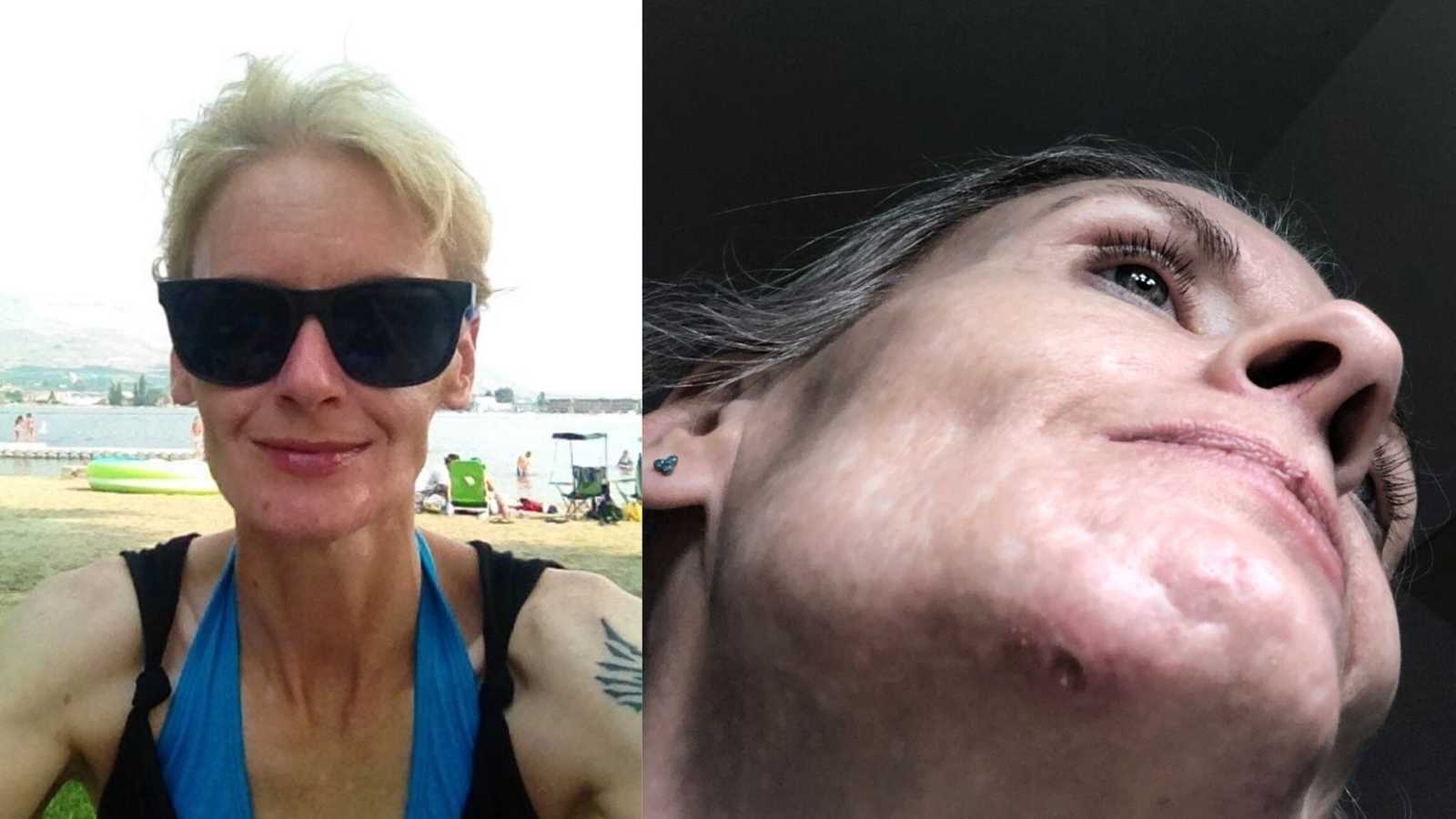“‘You really shouldn’t do this. I’ve never seen anything like this before. It’s awful. Why would you do this to yourself? Why don’t you just stop? This is just bizarre.’ The above is a shortened version of the monologue given by a maxillofacial surgeon while he cleaned, debrided, and excised an infected abscess on my chin. The hole would require five stitches to close; not unusual.
This corrective plastic surgery was not my first rodeo. It was not the first time a surgeon had to remove an abscess and fix a big hole I had carved into my face. This surgeon was new, though. My regular guy, and yes, I have a regular guy, was unavailable.
A great many medical professionals are not kind upon learning you engage in self-mutilation. (It’s now called non-suicidal self-injury, but I prefer to call it cutting or self-mutilation. I dislike the tendency to pretty up ugly things. People should be aware it’s bad; it should sound bad.) The lecture from the doctor was not the first I’d heard, nor was it the first time I’d experienced their disgust. They really needn’t have bothered; I was disgusted enough with myself.
You wonder how you come to this. How are you this person who mutilates themselves? How are you this person with multiple scars, a disfigured chin, and a lopsided mouth? You wonder why you can’t stop. You wonder how you could hate yourself this much.
The behaviors escalated when I turned nineteen and went to college. I discovered vomiting, modified my eating disorder, and remained actively bulimic for another twenty-six years. The cutting started shortly after the throwing up began.
That’s the thing with eating disorders. They’re very rude party guests. They bring people who weren’t invited along, like the cutting and the body dysmorphic disorder it’s related to.
I started with my arms. I’ve never bothered much with my legs, which is odd considering how much I hate them. I’ve made a few slicing cuts along spider veins to drain them, which no doubt sounds weirdly horrifying, but at this point, cutting into my body seems oddly normal to me.
It started with small cuts — little, testing ones. The purpose was two-fold. First, to see if I could feel anything, even pain. To see if anything would penetrate the emptiness that seemed to fill up my whole body, leaving everything hard and pointless, leaving me in despair. I wanted to feel something. Second, to see if anyone would notice or help me. I was dying, drowning in my depression and eating disorder. I needed the lifeline I couldn’t seem to ask for. No one said anything at all.
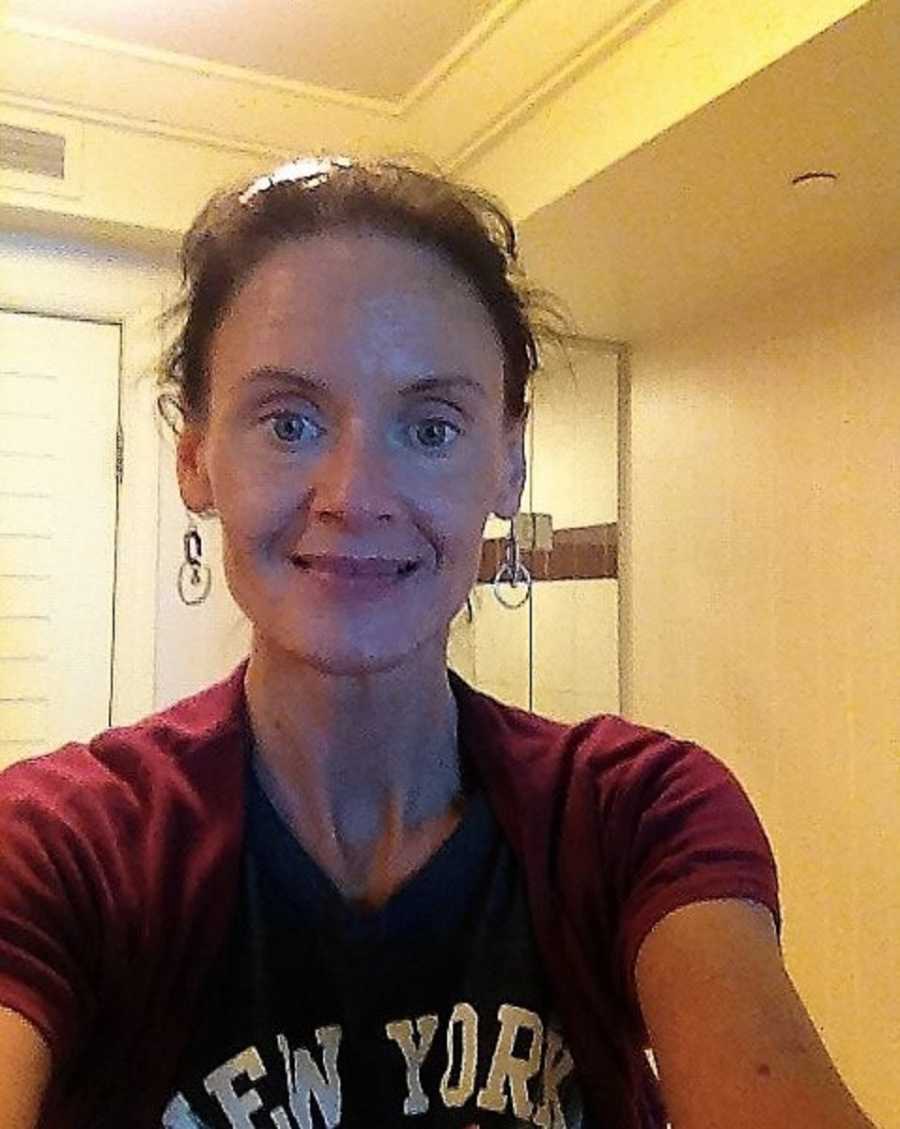
It didn’t hurt, I remember quite clearly. The lack of pain irritated and drove me to cut more. It bled some, but not as much as I expected. So, I did it again. It became frequent. At one point, I even embroidered my initials into my arm. I have no idea how far it would have escalated had my attention not been redirected. I was left with scars on my forearms. Years later, I would cover them with tattoos.
The location change happened after a purge. I noticed, as I looked in the mirror for visible signs of vomiting, there was a white mark on my chin — an imperfection. I squeezed it, but nothing. So, I used a pin. Success. White mark gone, hole cleaned out, symmetry achieved. Perfection was now closer. Until the next morning, when it was a big pus-filled spot. What to do but poke it again? And then go at it with scissors. If I could just get it clean, just get the white bits out. If I could just get the edges symmetrical. Then, everything would be okay.
This is insane, of course. You can’t mutilate your way to perfection.
I was able to keep the cutting mostly in check for about ten years. Yes, there were visible sores, but people assumed it was localized acne. If they asked, I’d mutter something about chronic infections. It was now true enough. I was constantly dealing with swollen glands and infected sores, constantly on antibiotics, constantly lying to doctors. I didn’t tell my doctor the truth until my late-thirties, early-forties; and then, only because my parents’ constant search for a cure for this mysterious condition became too much.
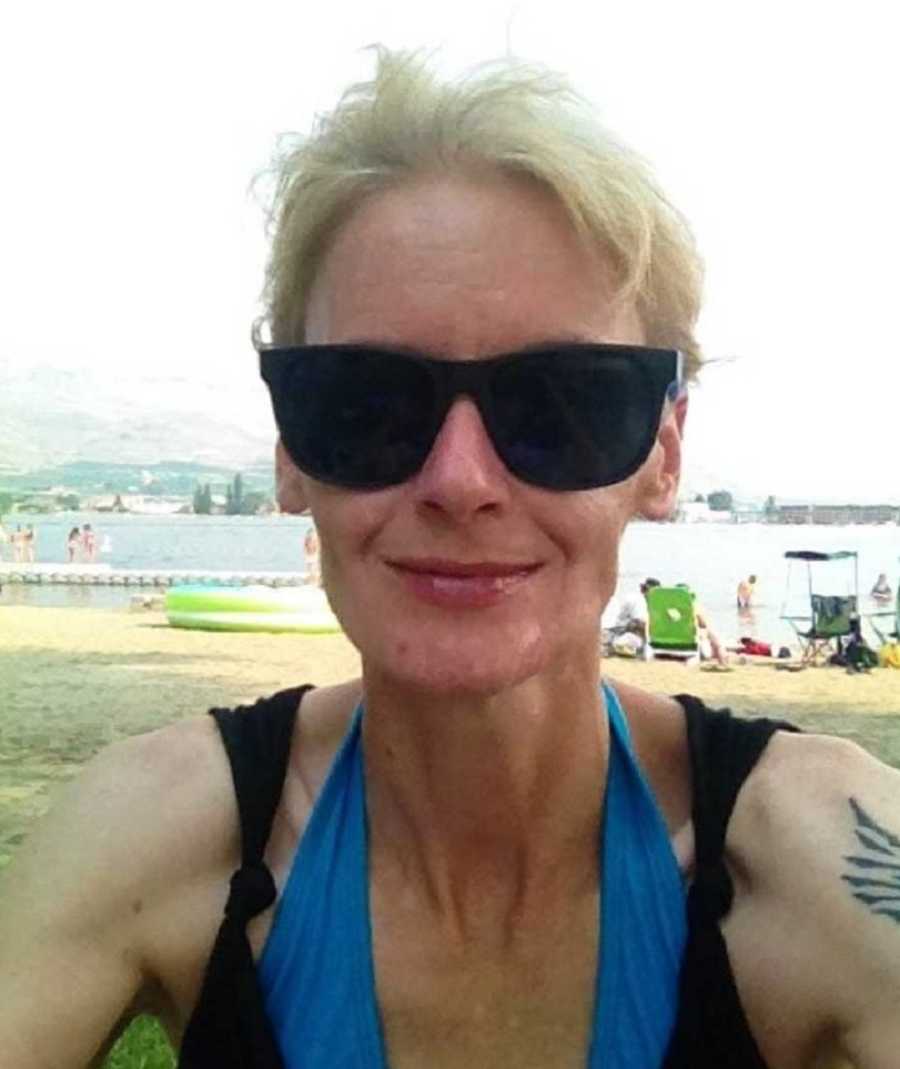
Guilt made me honest. It was also necessary, because my control started to slip and the cutting and consequences got more severe.
The cuts got bigger. The band-aids on my face got more obvious. In a fit of defiance, I started wearing colored ones. Decorated ones. I had some odd belief it was weirdly fashionable, the band-aids curving around my chin and along my jawline were some kind of artsy statement rather than proof of my collapsing control.
What I pretended was trendy, was tragic. I wore bandages constantly to hide the severe damage I was doing. The holes which started small, grew in size, along with my self-hatred and my seeming inability to control my urges. I didn’t yet know, it was intimately connected to my anxiety; as I struggled, as my mental health worsened, my cutting increased in severity.
The first one that scarred me was an inch across and half an inch deep. I could put the entire tip of my thumb inside and the nail would be lost from sight. I was terrified. I was horrified. I was also sick. The grievous wounds I was now inflicting would get infected regularly. Sometimes antibiotics and topical creams were enough. Sometimes it required a week or two of IV antibiotics. My face would swell until my chin resembled Jay Leno’s. Stitch marks and white scars became more prevalent.
I still didn’t stop.
I’d examine the wounds minutely, peeling up the bandages and inspecting the wound multiple times a day. Cutting away everything seemingly imperfect. Pulling out little threads which turned out to be nerves, partially paralyzing my lower lip and bits of my chin. I carried spare tools, band-aids, and creams with me everywhere. You never know when they’ll be needed.
I’d cut and dig until I was terrified the hole would open up into my mouth or reveal my jaw bone. I measured the depths constantly — with scissors, with Q-tips, with fingers — terrified to see how much of the tool disappeared. I would lose time. I’d go into the bathroom and get sidetracked by self-mutilation. When I was finally able to pull myself out of what I was doing, half an hour or more would have passed.
I bought magic creams. I drank colloidal silver. I followed every helpful suggestion for external treatment. I did everything bar stopping. I couldn’t seem to make myself quit. Every time I purged, I’d look in the mirror and hate the thing staring back. I’d see every flaw and think, ‘if only’. If only I was perfect and beautiful, everything would be okay. So ironic a quest for perfection would leave me scarred.
The cutting was intimately connected to my bulimia, but not exclusively so. I’d purge and I’d self-mutilate. But the latter could also be a solo activity. The wounds would hurt and burn and throb and I would be unable to leave them alone.
Sometimes I’d hit a vein and the blood would shoot out in an arc, creating stripes across the mirror and pouring into the sink, until I had the presence of mind to grab a cloth and slap it on top. I spent hours with ice packs on my face, with heat, trying to minimize swelling and draw out infections.
I’d see my son, watching me, watching this, seeing the bandages and the scars and the ports of the IV antibiotics. I’d feel like such a failure. How can you explain the incomprehensible to a child?
I’d throw away the scissors, the pins, and the snips over and over, only to head to the store and buy them again. I bought band-aids everywhere, looking for the perfect one to fix me.
Five years ago, I went to rehab. The eating disorder, the cutting, the depression: things were dire and death was getting close. I was at the tipping point. Get better or get dead. I stayed in residential care for a little over three months. While it wasn’t perfect, it did save my life. It caused a few problems too, but I’m still here and I’ve been working on my recovery ever since.
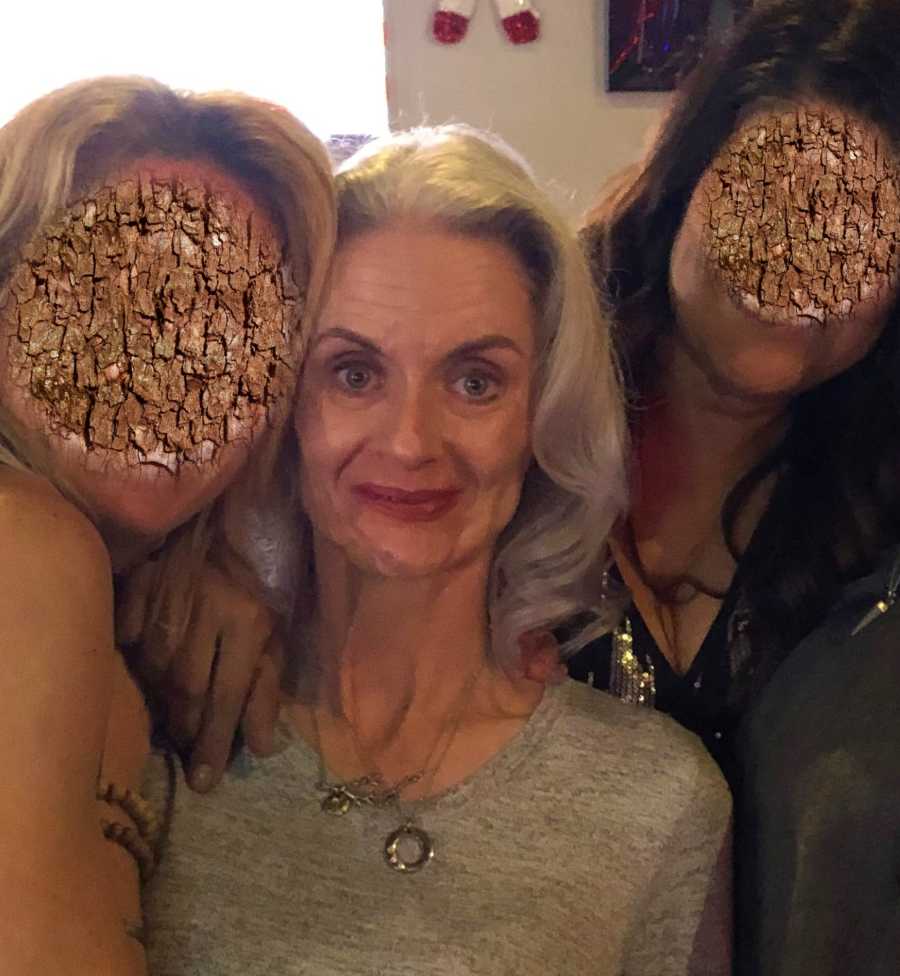
The cutting has diminished. I’m better than I was when things were at their worst. The behavior is not gone, although it’s less now I purge very infrequently. But I have not been as successful in resisting the urge to cut as I have been at working on my eating disorder behaviors.
It’s harder to talk about, for one. The sense of shame is pervasive and it’s hard to let go, hard to find people to share with who don’t react with semi-disgusted amazement and horror. And, there is still a part inside telling me I can fix it. Cut this, change that. Be perfect.
I spend a fair bit on skincare products these days. Not high-end ones, but higher-end grocery ones. I have this faint hope I can still make my skin beautiful, still be perfect.
Some damage, however, cannot be undone. There are scars everywhere and the skin is texturally-impaired and lumpy. Some of the scars are surgical and long; they pull my chin awkwardly when I smile, giving me a skewed appearance. It’s not really correctable; I’ve been to plastic surgeons and while they prevaricate a little because they want your money, they admit what they can do for me is quite limited.
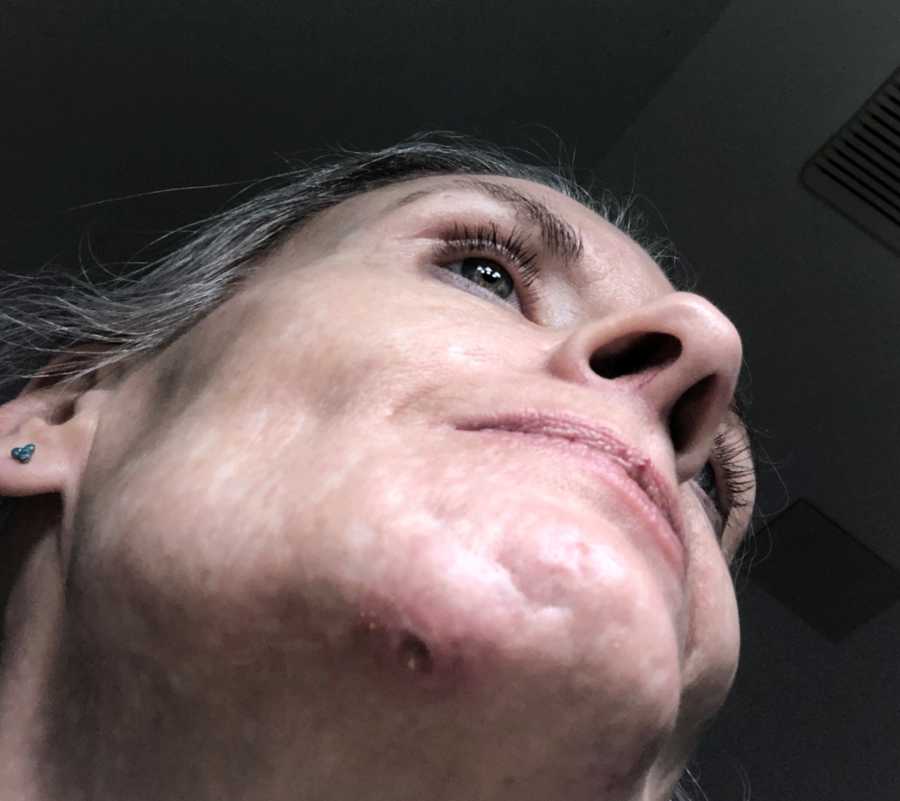
It’s hard to look in the mirror and see the damage you’ve done. It’s hard knowing you’re still doing it at times — this self-destructive, unkind, marginally crazy thing.
The greatest relief has been from philosophy. I’ve read a great many books by writers new and old, and what I’ve come to learn is this: there is very little in life in your control. I cannot control the past, cannot undo the emotional damage, cannot change what is. I cannot make other people into what I need or make the world an easier place. What I can do is work on what and how I think, and what I choose to do. What I can do is live in the now, live each and every moment to the best of my ability. And I can try very hard to learn to like myself enough, so one day, the idea of self-mutilation fails to rise.”
This story was submitted to Love What Matters by Em Pahl of Fraser Valley, British Columbia, Canada. You can follow her journey on her blog. Do you have a similar experience? We’d like to hear your important journey. Submit your own story here. Be sure to subscribe to our free email newsletter for our best stories, and YouTube for our best videos.
Read more stories like this:
Provide strength for others. SHARE this story on Facebook with your friends and family.

